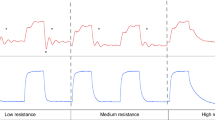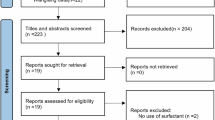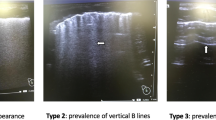Abstract
ABSTRACT: Previous studies in preterm lambs have shown that exogenous surfactant is more uniformly distributed if given at birth before ventilation or if followed by high-frequency ventilation (HFV) after establishing conventional ventilation (CV). We hypothesized that the preterm rabbit pup would respond similarly and that improved respiratory system compliance (Crs) would accompany improved surfactant distribution. We randomized pups (27 d gestation) into three groups: control, surfactant at birth, and surfactant after 15 min of CV (rescue). We administered dipalmitoylphosphatidyl-[3H]choline-labe!ed natural surfactant by tracheostomy to each of the treated groups. The two treatment groups were treated for 15 min with either HFV or CV and subsequently with CV. We measured Crs at 15, 25, 35, and 45 min after surfactant. Lungs from pups treated with CV or HFV (n = 89) for 15 min, with and without 30 min of subsequent CV, were cut into 32 pieces that were counted for distribution of label or were sectioned for quantitative morphometry (n = 36). Pups receiving surfactant after 15 min of CV had higher Crs 15 min after surfactant than either pups treated with surfactant at birth or controls (p < 0.001). The Crs of pups 15 min after rescue surfactant followed by HFV was lower than that of pups treated with CV (p < 0.05) but was higher than that of either control or pups treated at birth groups (p < 0.05). Crs at 35 and 45 min after surfactant were the same in all treatment groups. Application of HFV appeared to delay the delivery of surfactant to the distal airspaces. Differences in Crs paralleled differences in the uniformity of distribution of radiolabel. Distribution was more uniform in pups treated with CV than HFV after rescue (p < 0.001) and after an additional 30 min of CV in both CV and HFV rescue groups. Aeration as judged by morphometry was similar in all treatment groups. These observations differ from previous reports and may be explained by differences in species, methods of HFV, or the use of natural surfactant containing surfactant-associated protein A versus lipid-extracted surfactant formulations containing solely lipophilic proteins.
Similar content being viewed by others
Log in or create a free account to read this content
Gain free access to this article, as well as selected content from this journal and more on nature.com
or
Author information
Authors and Affiliations
Rights and permissions
About this article
Cite this article
Heldt, G., Merritt, T., Golembeski, D. et al. Distribution of Surfactant, Lung Compliance, and Aeration of Preterm Rabbit Lungs after Surfactant Therapy and Conventional and High-Frequency Oscillatory Ventilation. Pediatr Res 31, 270–275 (1992). https://doi.org/10.1203/00006450-199203000-00016
Received:
Accepted:
Issue date:
DOI: https://doi.org/10.1203/00006450-199203000-00016
This article is cited by
-
Surfactant Therapy for Respiratory Distress Syndrome in Premature Neonates
American Journal of Respiratory Medicine (2002)



